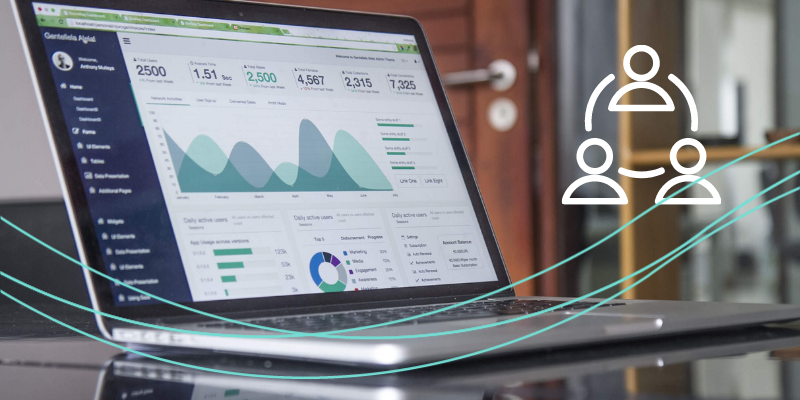One of the most important things to understand about the data that your business is creating is that you're talking about so much more than just a collection of files sitting on a hard drive somewhere.
Contained within that data is the context and insight you need to not only understand how far your organization has come, but also to better predict where it might be headed. It holds the key to better understanding your target audience, all so that you can serve them in a far more effective way than ever. It has what you need to understand everything you've already worked so hard to build on a fundamental level, thus allowing you to reinforce and strengthen your position moving forward.
In other words, hidden inside that data is a story — and it's one that absolutely needs to be told.
Data storytelling itself can take many forms — from simple visualizations to complicated investigative pieces and everything in between. But regardless of the exact shape data storytelling takes, the end result is clear — it's an opportunity to better inform and persuade audiences on just about any topic that you can think of.
Using data to tell stories is one of the best chances you have to engage with key audiences like never before. Thankfully, getting to this point isn't nearly as difficult as one might think. You just need to keep a few key things in mind along the way.
The Art of Data Storytelling: Breaking Things Down
One of the major reasons why data storytelling is so effective ultimately comes down to the power of stories themselves.
Not only are stories inherently memorable, but they're also essential to help us process the world around us. Stories help people detect patterns, understand context, and derive meaning from experiences in a way that they may not otherwise be able to. They help us focus on key information and remember it for far longer than we otherwise would.
But within the context of your business, it's important to understand that the types of data professionals you're likely working with don't necessarily get training related to storytelling. They understand how to help you work with your data, but they lack the skills needed to do so more effectively than ever. Therefore, building up your data storytelling skills and empowering those professionals becomes one of the best chances you have to do all of this and more.
Putting Data Storytelling to Work for You
In an effort to empower your own data storytelling efforts, you need to first understand more about the core elements of data stories.
The first, obviously, is the data itself. This means that as your storytelling efforts begin, you need to think about what data you should include for the best results. This means having not only an understanding of your data but also the context of that information, the quality and even the metadata. Familiarizing yourself with the core fundamentals of this data will give you everything you need to build a better story from here.
Speaking of the story, the next most important element that you'll want to focus on is the narrative itself. What, exactly, are you trying to say with your data? What is your data trying to say to you?
Whether you're attempting to summarize data, make comparisons between two or more ideas, or even highlight outliers, it doesn't actually matter — you need to understand the goal of your data story before you can begin to tell it in the most effective way. Start with the main idea that you're trying to get across and then work your way back to the data, choosing those sources that support the narrative as it unfolds.
Finally, you have the technique of data visualization — something that can help tell your story in a natural and organic way. Human beings are visual learners — they always have been, and they always will be. When information is presented to us visually, we don't just understand it better — we also remember it for far longer, too.
That's why data visualization is another crucial element of your data storytelling efforts. By showing, not telling, you make it easier to get your point across in a way that resonates with your audience.
But in the end, you can't forget to focus on the most important element of all: your audience. By taking the time at the beginning of this process to define who your audience actually is, you put yourself in the best position to get the right story in front of them at exactly the right time.


